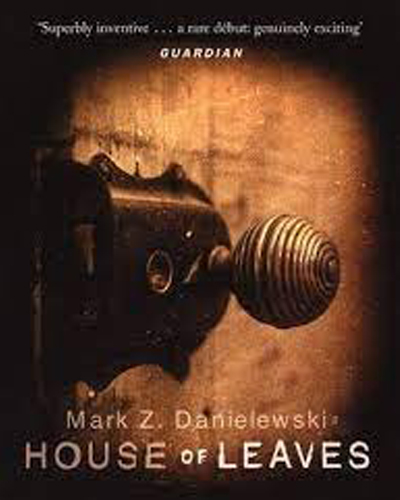
| Language | From $0.00 |
| Release Date | May 7, 2000 |
| Genre | Horror |
| Author | Mark Z. Danielewski |
| File Size | Random House |
| Rating | (4.09) |
At the heart of House of Leaves is The Navidson Record, a documentary about a family moving into a mysterious house. The documentary chronicles the family’s exploration of the house’s bizarre and seemingly infinite interior, as well as the psychological toll it takes on them. The Navidson Record serves as the central narrative around which the rest of the novel is built.
The story of House of Leaves is narrated by Johnny Truant, a troubled young man who discovers a manuscript containing an analysis of The Navidson Record. As Johnny becomes increasingly obsessed with the manuscript, his own life begins to unravel, and his narrative interweaves with that of the documentary, adding another layer of complexity to the novel’s structure.
The titular house is the novel’s most enigmatic character, a seemingly sentient and malevolent force that defies the laws of physics and reason. Its ever-changing architecture and sinister presence drive the narrative and serve as an allegory for the labyrinthine nature of the book itself.
House of Leaves is permeated with the motif of labyrinths and mazes, both in its physical setting and its narrative structure. The house’s constantly shifting interior mirrors the labyrinthine journey readers must navigate as they piece together the various strands of the story. This theme serves to underscore the novel’s exploration of the unknown, the disorienting, and the unattainable.
The characters in House of Leaves are confronted with various fears: the fear of the unknown, the fear of loss, and the fear of madness. These fears not only drive the plot but also resonate with the reader, who must grapple with the uncertainty and disorientation inherent in the novel’s unconventional structure.
House of Leaves is a prime example of metafiction, a work that is self-referential and self-aware of its status as a constructed narrative. The novel incorporates numerous references to other texts, both real and fictional, blurring the lines between reality and fiction. This intertextuality adds another layer of complexity to the reading experience, challenging readers to question the nature of storytelling and the boundaries of truth.
One of the most striking aspects of House of Leaves is its innovative formatting. Danielewski employs unconventional typography, layout, and design elements to create a visual experience that complements the novel’s labyrinthine structure. Pages may contain only a few words, be filled with footnotes, or require the reader to physically rotate the book to read the text. This unique approach not only adds to the novel’s mystique but also serves to enhance the reader’s sense of disorientation and immersion.
House of Leaves features multiple narrators, each with their distinct voice and perspective. This narrative choice adds depth and complexity to the story, while also reflecting the novel’s themes of uncertainty and the unreliability of perception.
Since its publication in 2000, House of Leaves has garnered a devoted following and received widespread critical acclaim. Critics have praised the novel for its innovative structure, compelling narrative, and ambitious exploration of themes. However, some readers have found the unconventional formatting and dense content to be overwhelming or off-putting.
House of Leaves has left an indelible mark on contemporary literature, inspiring a generation of writers to experiment with form and narrative. Its cult status has grown over the years, cementing its place as a unique and unforgettable work of fiction.
In summary, House of Leaves is an ambitious, innovative, and challenging novel that offers a singular reading experience. For those willing to embrace its labyrinthine structure and confront its unsettling themes, this cult classic is a rewarding and unforgettable journey into the unknown.